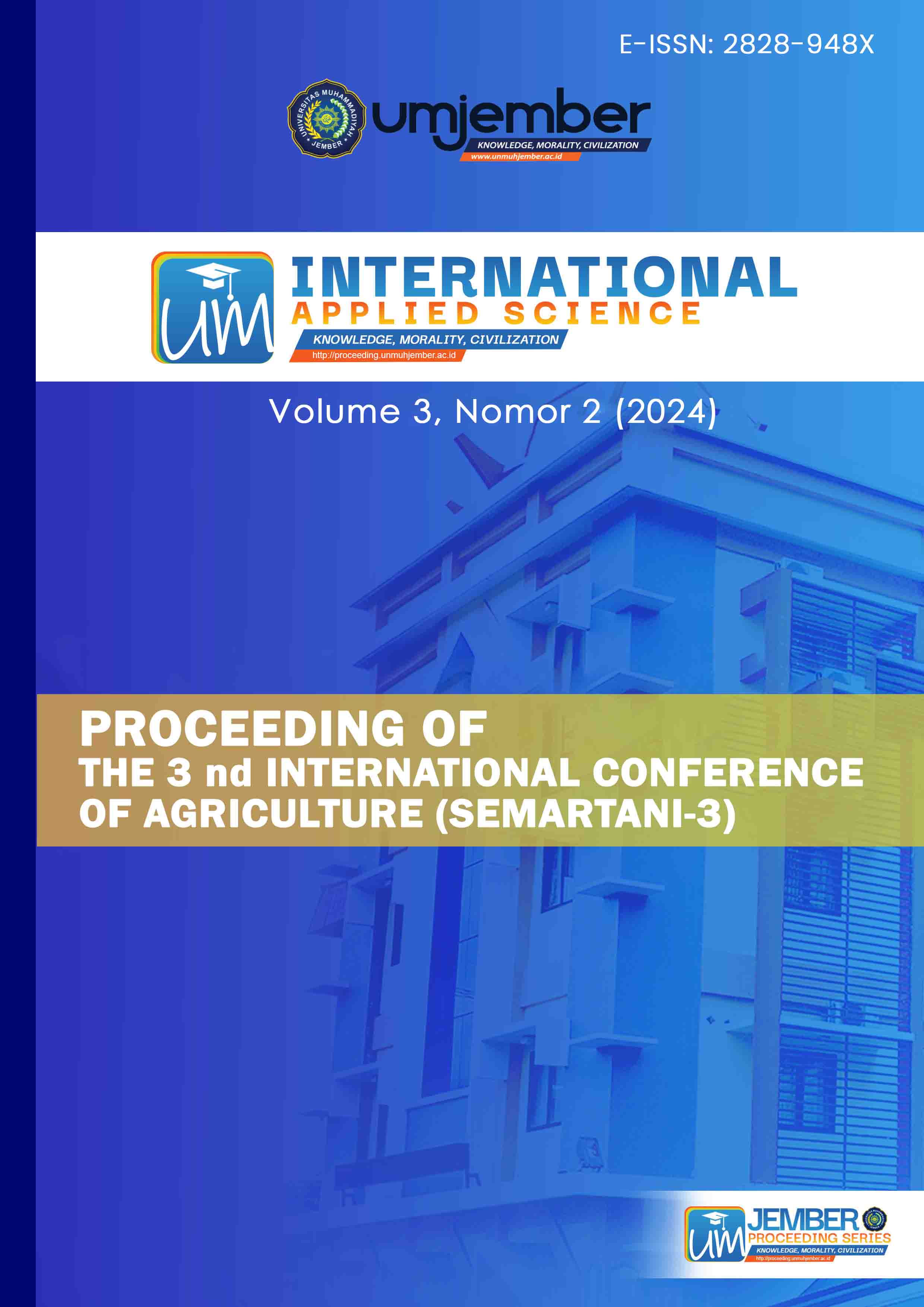Temperature and Time Optimization of Dragon Fruit Peel Powder Drying Using the Response Surface Methodology
DOI:
https://doi.org/10.32528/ias.v3i2.632Keywords:
Drying, RSM, Dragon Fruit Peel PowderAbstract
The purpose of this study is to obtain the right temperature and time for the manufacture of dragon fruit peel powder and to obtain the optimal total yield and water content. The method used in the spraying process is Foam Mat Drying. The method used for optimization is the Response Surface Method (RSM) with a factorial centralized composite design 22. The factors used are the temperature of 60°C, 70°C, and 80°C and the time is 5 hours, 6 hours, 7 hours. The results showed that the composition of the formula was the best at a temperature of 79,214°C and a time of 5,007 hours. It can be predicted that the optimal formula gets a yield value of 16.109%, and a moisture content of 4.662%. The total powder obtained in 1 day of production is 5000 grams, if the production for 1 week is 35,000 grams, then 150,000 grams will be obtained for 1 month of production. It was concluded that the optimal formula that has been obtained can be used as a model for making powder from dragon fruit peel.
Downloads
References
N. Rochmawati, "Utilization of Red Dragon Fruit (Hylocereus polyrhizus) Peel as Flour for Making Cookies," J. Food and Agroindustry, vol. 7, no. 3, pp. 19–24, 2019.
B. P. Statistics, "Horticultural Agricultural Statistics of East Java Province." 2022.
A. W. Lubis and D. N. Harahap, "The Utilization of Super Red Dragon Fruit Juice (Hylocereus costaricensis) in the Production of Nata De Coco on the Physical Quality of Nata," J. Chem. Educ. Sci., vol. 2, no. 2, pp. 1–10, 2018.
E. Widowati, N. H. R. Parnanto, and M. Muthoharoh, "Effect of Polygalacturonase and Gelatin Enzymes in the Classification of Super Red Dragon Fruit Juice (Hylocereus costaricensis)," J. Technol. Tenderloin. Pertan., vol. 13, no. 1, p. 56, 2020, doi: 10.20961/jthp.v13i1.40950.
A. H. H. Slamet, D. N. Mutmaidah, R. Rizqullah, and F. Apriani, "Analysis of Added Value and Development Strategy of Dragon Fruit Peel Processing Industry in Banyuwangi Regency, East Java," Food Sci. J. Food Sci. Technol., vol. 2, no. 1, pp. 20–47, 2022, doi: 10.33830/fsj.v2i1.2686.2022.
W. Enjelina, Y. O. Rilza, and Z. Erda, "Utilization of the skin of red dragon fruit (Hylocereus polyrhizus sp.) to extend the shelf life of wet noodles," AcTion Aceh Nutr. J., vol. 4, no. 1, p. 63, 2019, doi: 10.30867/action.v4i1.162.
A. R. Ansharie and R. Rahmawati, "Making Dragon Fruit Powder in MBKM Industrial Internship Activities at PT Samudra Mas Nusantara, Sidoarjo, East Java," J. Service. Masy. Tech. Machine (Service-Machine), vol. 2, no. 2, pp. 59–67, 2022.
M. Yamin, D. F. Ayu, and F. Hamzah, "Drying Duration on Antioxidant Activity and Quality of Chinese Ketepeng Leaf Herbal Tea (Cassia alata L.)," Let's FAPERTA, vol. 4, no. 2, pp. 1–15, 2017.
S. Rahman, Book on Wood Plant-Based Flour and Starch Processing Technology. 2018.
H. Ashshiddiqi, "Optimization of the Process of Making Radish Powder Using the Foam Mat Drying Method," 2019.
A. maharani Manik, T. Karo-karo, and linda masniary Lubis, "Effect of Drying Temperature and Drying Time of Acid Fruit (Garcinia atroviridis) on the Quality of Acid Cut," J. Food Engineering, vol. 7, no. 1, pp. 1–10, 2019.
Downloads
Published
How to Cite
Issue
Section
License

This work is licensed under a Creative Commons Attribution-NonCommercial 4.0 International License.


